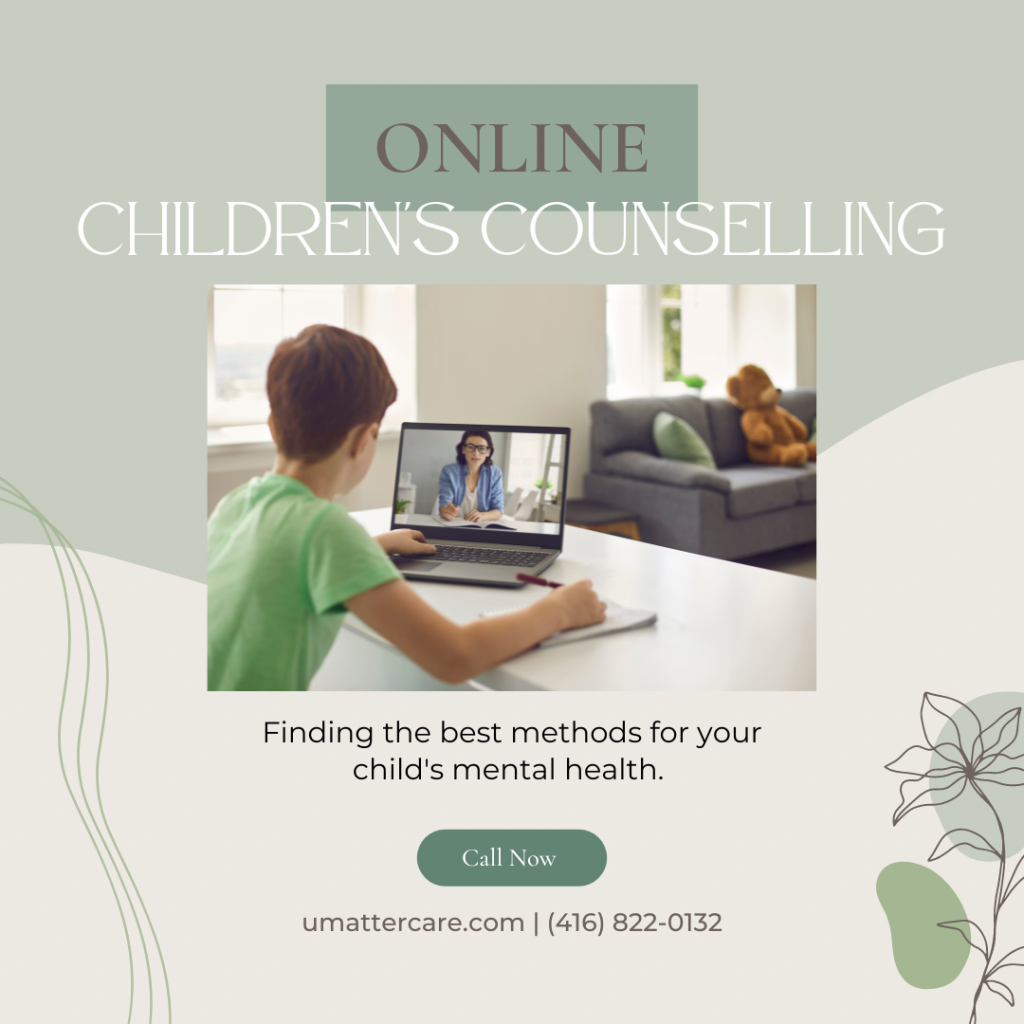Tag: counselling near me
Thriving in a New Work Environment: The Power of Adaptability
Starting a new job can be both exciting and challenging. Every workplace has its own culture, expectations, and unique dynamics. One of the biggest hurdles people face when adapting to a new environment is dealing with difficult bosses or coworkers. The reality is that negativity, bad attitudes, and workplace politics exist everywhere. Instead of allowing these challenges to drain our energy and motivation, we can shift our focus to something far more productive: our own growth and skill development.
Expect Challenges, but Stay Focused

It’s easy to let toxic behaviors in the workplace affect our mindset. Whether it’s an overly critical boss, uncooperative teammates, or office gossip, negativity is an unfortunate reality in most workplaces. However, our success does not depend on changing others but on how we choose to respond. Instead of focusing on external challenges, we should direct our energy toward mastering our roles, honing new skills, and finding ways to excel despite distractions.
Treat Every Job as an Opportunity
No matter where we work, there is always something valuable to learn. Every role, no matter how small or temporary, presents an opportunity to improve our abilities, test our limits, and build resilience. When we see work as a learning experience rather than just a paycheck, our perspective shifts. We become more engaged, more resourceful, and ultimately more adaptable in any setting.
Developing a Growth Mindset
Adaptability is rooted in having a growth mindset—the belief that we can develop our skills through effort and persistence. Instead of seeing obstacles as reasons to quit, we should see them as chances to improve. For example, dealing with a demanding boss can teach us patience, resilience, and professionalism under pressure. Navigating office politics can help us develop emotional intelligence and conflict-resolution skills. Every challenge offers a hidden lesson that can be valuable in future career opportunities.
Focusing on Self-Improvement
Rather than dwelling on office negativity, make it a personal mission to grow each day. Identify what skills you can develop in your role, whether it’s leadership, communication, problem-solving, or technical expertise. Set small daily or weekly goals to push yourself forward. By focusing on self-improvement, you not only become more skilled and valuable in your profession but also create a sense of accomplishment that makes your workdays more fulfilling.

Building Your Own Work Experience
Ultimately, your experience in a workplace is what you make of it. If you focus on office drama and negativity, work will feel draining. If you focus on learning and progressing, work will feel like a stepping stone to something greater. Every job is a chance to discover your strengths, improve weaknesses, and build a professional foundation that will benefit you in the long run.
Conclusion
In every work environment, there will always be difficult personalities and unavoidable challenges. However, our attitude and approach determine how we experience our workday. By focusing on self-improvement, skill development, and adaptability, we can turn any job into a valuable learning experience. Instead of letting negativity dictate our happiness, we should embrace every opportunity to grow, test our limits, and pave the way for long-term success. Adaptability isn’t just about surviving in a workplace—it’s about thriving in any environment.
The Silent Epidemic: How Loneliness Affects Seniors’ Health in Today’s Fast-Paced World
Loneliness has emerged as a silent epidemic, significantly affecting the health and well-being of seniors. In an age where technological advancements have fundamentally altered communication methods, many older adults find themselves increasingly isolated. The implications of this loneliness are profound, particularly when coupled with the modern realities facing their families, including long working hours and the intense stress experienced by younger generations.
The Health Fallout from Loneliness
Research has shown that loneliness can lead to various health issues among seniors. According to studies, socially isolated seniors are at a higher risk of developing cardiovascular diseases, cognitive decline, and compromised immune systems. Additionally, the feeling of loneliness can trigger mental health disorders such as depression and anxiety. The physiological effects are alarming, as loneliness has been likened to smoking 15 cigarettes a day in terms of its impact on mortality rates.
The interplay between mental and physical health means that seniors who feel lonely may hesitate to engage in physical activities or seek medical care, further exacerbating their conditions. This creates a vicious cycle where loneliness leads to declining health, which, in turn, fosters more loneliness.
The Role of Family Dynamics in Loneliness
As society evolves, the structure of families is also changing. Many young adults today work long hours, often juggling multiple jobs to cope with economic pressures, student loans, and rising living costs. This relentless grind can lead to extreme stress and burnout, leaving little time for family engagements or nurturing relationships with older relatives.
Consequently, seniors may find themselves feeling abandoned or neglected, as family members prioritize their demanding work schedules over spending quality time with them. The joy of shared meals, conversations, and family gatherings diminishes, pushing older adults further into isolation.
Moreover, the rise of technology as a primary mode of communication lacks the warmth of face-to-face interactions. While video calls and texting can help bridge the gap, they often do not replace the physical presence and emotional connections that in-person relationships provide.
Impact on Caregiving Dynamics

The stress that young adults experience can also affect their ability to provide care effectively, further contributing to seniors’ feelings of loneliness. Caregiving is demanding, requiring not only time but emotional energy. When caregivers are overwhelmed, their capacity to connect with loved ones diminishes. This can leave seniors feeling like a burden rather than cherished family members, leading to a sense of worthlessness and further isolating them.
The stress-strain on caregivers can create a dual problem: seniors feeling lonely due to lack of attention while caregivers grapple with their own emotional and mental health challenges. This scenario exemplifies the cyclical nature of isolation and stress, with ramifications for both young and old.
Combating Loneliness: Strategies for Families
To address this troubling trend of loneliness among seniors, families must prioritize meaningful connections. Here are some strategies to help bridge the gap:
Regular Check-Ins: Schedule regular video calls or phone calls to check in on senior family members. Even short conversations can make a significant difference.
Create Shared Activities: Find common interests that can foster bonding, whether it’s gardening, playing games, or participating in book clubs. These activities not only provide entertainment but also reinforce family ties.
Leverage Technology: Introduce seniors to social media platforms or apps designed for seniors that encourage communication. Teaching them how to use technology can empower them to reach out to others.
Seek Community Programs: Help seniors engage with local community groups or organizations that provide social opportunities. Many communities have programs tailored for seniors that promote socialization through activities and events.
Encourage In-Person Visits: If possible, plan family gatherings or visits. This could be as simple as a weekend lunch or a family outing, which can revitalize relationships.
Be Mindful of Stress: Young adults should practice self-care and recognize their own limits. Caregiver support groups can help provide the necessary emotional and psychological support while offering practical assistance.
Loneliness among seniors is a complex issue exacerbated by modern family dynamics, particularly the demands placed on younger generations. Understanding the direct correlation between loneliness and health is crucial for families striving to support their older loved ones. By fostering connection, compassion, and communication, families can mitigate the impact of loneliness, improving both their own well-being and that of the seniors in their lives. In this fast-paced world, ensuring that no one feels left behind is more important than ever.
DOMESTIC ABUSE
Assault is a type of violent crime that involves intentionally causing fear or harm to another person. It can take many forms, including physical assault, sexual assault, and verbal assault. Physical assault involves using force to harm or injure another person, while sexual assault involves any type of unwanted sexual contact. Verbal assault, on the other hand, involves using words to harm, threaten, or intimidate another person. Regardless of the form it takes, assault is a serious crime that can have lasting physical and emotional consequences for victims.
FORMS OF ABUSE
- physically
- emotionally
- psychologically
- financially
- sexually
INTENTION OF ABUSIVE BEHAVIORS
- frighten
- embarrass
- intimidate
- terrorize
- manipulate
- hurt
- humiliate
- blame
- injure or
- wound someone else
EFFECTS ON THE ABUSED
- fearful
- intimidated
- insecure
- unsafe
- unloved
- humiliated
- obligated
Domestic abuse is a pattern of behavior used by one person to gain and maintain power and control over another person in an intimate relationship. This behavior can take many forms, including physical, sexual, emotional, and psychological abuse.

Physical abuse involves the use of force or violence, such as hitting, slapping, kicking, or choking.
Sexual abuse involves any unwanted sexual activity, including rape and sexual assault.
Emotional abuse includes verbal abuse, threats, intimidation, and isolation.
Psychological abuse involves manipulating or controlling the victim’s thoughts, feelings, and behaviors.
Abuse is not always reported because it is hard to recognize even by the victims themselves. However, the impact of abuse is devastating and it continues to ruin many lives.
How to spot domestic abuse
Spotting domestic abuse can be challenging, as the signs may not always be visible, and victims may be reluctant to disclose the abuse. However, some common signs may indicate that someone is experiencing domestic abuse:
Physical signs: Unexplained bruises, cuts, or other injuries may be a sign of physical abuse. The victim may also wear clothing that covers their body, even in warm weather, to conceal injuries.
Emotional and psychological signs: Victims of domestic abuse may display signs of anxiety, depression, low self-esteem, or other emotional and psychological problems. They may also have sudden mood swings or seem to be walking on eggshells around their partner.
Isolation: Victims of domestic abuse may become isolated from friends and family. They may not be allowed to leave the house, or their partner may monitor their phone and email communications.
Financial control: Abusers may control the victim’s finances, limiting their access to money and other resources.
Sexual abuse: Victims of domestic abuse may experience sexual abuse, including unwanted sexual contact or forced sexual acts.
Verbal abuse: Verbal abuse can take many forms, including insults, threats, and humiliation. The victim may also be criticized for their appearance, behavior, or other personal characteristics.
Controlling behavior: Abusers often use controlling behavior to maintain power and control over their victims. This may include monitoring their whereabouts, controlling what they wear or eat, and limiting their access to friends and family.
If you suspect that someone you know is experiencing domestic abuse, it is important to approach the situation with sensitivity and understanding. Encourage them to seek help from domestic violence hotlines, counselling services, and other support networks. Remember that leaving an abusive relationship can be dangerous and that the victim may need support and understanding during this time.
Dependency and emotional safety are critical factors influencing the dynamics and well-being of individuals in relationships. This article aims to explore the interplay between dependency and emotional safety, highlighting their impact on relationship quality and personal growth.
Understanding Dependency
Dependency in relationships refers to the degree to which an individual relies on another person for emotional support, validation, or fulfillment of needs. It can manifest in various forms, such as financial dependency, emotional reliance, or seeking constant reassurance and approval.
Dependency often arises from factors such as past experiences, attachment styles, and unresolved emotional issues. Individuals may develop dependency patterns as a way to cope with insecurity, anxiety, or low self-esteem.
Exploring Emotional Safety
Emotional safety is the sense of security, trust, and comfort that individuals experience in relationships. It encompasses feeling respected, understood, and valued by one’s partner, creating an environment where emotional expression is met with empathy and support.
Factors contributing to emotional safety include effective communication, healthy boundaries, mutual respect, and the ability to manage conflicts constructively. Emotional safety fosters intimacy, vulnerability, and emotional connection between partners.
The Interplay Between Dependency and Emotional Safety
Dependency and emotional safety are closely intertwined, with each influencing the other in relationship dynamics. In healthy relationships, a balance is struck where individuals can rely on each other for support without compromising their sense of self-worth or emotional well-being.
However, when dependency is excessive or unbalanced, it can undermine emotional safety. An overly dependent individual may feel insecure, anxious, or fearful of abandonment, leading to challenges in expressing emotions authentically or setting healthy boundaries.
Conversely, a lack of emotional safety can exacerbate dependency issues. When individuals feel unheard, judged, or invalidated in their emotions, they may seek validation and reassurance in unhealthy ways, perpetuating cycles of dependency and insecurity.
Strategies for Promoting Healthy Dependency and Emotional Safety
Communication:
Encourage open and honest communication to foster understanding, empathy, and validation of each other’s emotions and needs
Boundaries:
Establish and respect boundaries to promote individual autonomy, self-care, and emotional well-being
Self-Awareness:
Cultivate self-awareness to identify and address patterns of dependency, triggers, and emotional reactions
Mutual Support:
Create a supportive environment where both partners actively support each other’s personal growth, aspirations, and challenges
Professional Help:
Seek guidance from therapists or counselors to navigate dependency issues, improve communication skills, and enhance emotional safety in the relationship.
Dependency and emotional safety play pivotal roles in shaping the quality and sustainability of relationships. By fostering healthy communication, boundaries, self-awareness, and mutual support, individuals can cultivate relationships that are characterized by trust, understanding, and emotional fulfillment.
The Role of Trust in the Family Dynamics
Trust is the cornerstone of any healthy and thriving relationship, and within family dynamics, its role is paramount. The level of trust within a family unit profoundly influences the quality of relationships, communication, and overall well-being. Let’s explore how trust plays a crucial role in family dynamics.
Open communication
Trust creates a foundation for open and honest communication within the family. When family members trust one another, they feel secure expressing their thoughts, feelings, and concerns without fear of judgment or repercussion. This open communication fosters understanding and helps prevent misunderstandings.⇒
Vulnerability and Support
Trust allows family members to be vulnerable with each other. It creates a safe space where individuals can share their insecurities, challenges, and dreams, knowing that they will be met with empathy and support. In a trusting family environment, vulnerability becomes a strength rather than a weakness. ⇒
Respect for Boundaries
Trust is closely linked to respecting personal boundaries within a family. When trust is present, family members are more likely to acknowledge and honor each other’s need for space, autonomy, and individuality. This mutual respect strengthens the overall fabric of the family. ⇒
Dependability and Reliability
Trust instills a sense of dependability and reliability within the family unit. Family members can count on each other to fulfill commitments, provide support during challenging times, and be consistent in their actions. This reliability creates a sense of security and stability. ⇒
Conflict Resolution
Trust is crucial for effective conflict resolution. In a trusting family, conflicts are approached with the belief that each member has the best interests of the family at heart. This belief fosters a collaborative problem-solving approach rather than an adversarial one. ⇒
Emotional Safety
Trust contributes to emotional safety within the family. Family members feel secure in expressing their emotions, knowing that they won’t be dismissed or invalidated. This emotional safety promotes a sense of belonging and encourages individuals to share their joys and sorrows without reservation. ⇒
Building Strong Bonds
Trust forms the foundation for building strong and enduring bonds within the family. As family members consistently demonstrate trustworthiness, the bonds of love, loyalty, and connection deepen. These bonds create a support system that withstands the tests of time. ⇒
Promoting Independence
In a trusting family environment, individuals are encouraged to pursue their goals and aspirations independently. Trust allows family members to believe in each other’s capabilities, fostering an atmosphere where personal growth and independence are celebrated rather than hindered. ⇒
Shared Values and Expectations
Trust is closely tied to shared values and expectations. When family members trust that everyone is working towards common goals and upholding shared values, it strengthens the family’s sense of purpose and unity. ⇒
Forgiveness and Resilience
Trust contributes to the family’s ability to forgive and bounce back from challenges. When trust is the foundation, family members are more likely to approach mistakes or conflicts with a willingness to forgive, learn, and grow together. ⇒
In essence, trust is the glue that holds family dynamics together. It creates an environment where love, understanding, and support can flourish, fostering a resilient and harmonious family unit. Nurturing trust requires ongoing effort, communication, and a shared commitment to building and maintaining strong connections within the family.
Growing up with addicted parents
Growing up with addicted parents can be an incredibly difficult experience for children. Addiction can impact every aspect of a family’s life, from the emotional well-being of each family member to the practical aspects of day-to-day living. Children who grow up in households where addiction is present often face unique challenges that can affect their development and future.
One of the most significant challenges that children of addicted parents face is emotional instability. Addiction is often accompanied by mood swings, outbursts of anger, and unpredictable behavior. Children may never know what to expect from their parents, which can lead to feelings of anxiety, fear, and confusion. This can make it challenging for them to form healthy relationships in the future, as they may struggle to trust others or feel safe around them.
One of the most significant issues that these children face is anger management problems. Children living in households with addicted parents often experience a range of emotions, including fear, sadness, guilt, and anger. However, anger, in particular, can be a prevalent and disruptive emotion for these children.
Children who struggle with anger management issues may display it in the form of outbursts, temper tantrums, verbal or physical aggression, and even self-harm. These behaviors can create additional stress for the child and the family, exacerbating the challenges of living with addiction.
Children of addicted parents may also face the risk of neglect or abuse. Addiction can impair a parent’s judgment and decision-making abilities, making it difficult for them to prioritize their children’s needs. In extreme cases, addiction can lead to neglect or abuse of children, as parents may be too intoxicated or preoccupied to care for them properly. This can have lasting effects on a child’s mental health and well-being, leading to long-term trauma or even physical harm.They may be physically present but emotionally absent, leaving children feeling lonely, isolated, and confused

Addiction can lead to financial instability, as parents may struggle to hold down a job or prioritize their spending. This can mean that children may not have access to basic necessities like food, clothing, or housing. Additionally, addiction can make it challenging for parents to maintain consistent routines or schedules, leading to unpredictable home life.
Despite these challenges, it is essential to recognize that children of addicted parents can and do overcome these obstacles. With the right support and resources, they can build resilience and learn to cope with the challenges they face. This may include seeking out therapy or counseling to address the emotional impact of addiction, connecting with community resources for basic needs like food and shelter, or even finding a supportive network of friends or family members who can offer a stable and positive environment.
In addition to seeking out support, it is also crucial for children of addicted parents to practice self-care. This may involve setting boundaries with their parents or learning healthy coping mechanisms to manage stress and anxiety. It may also involve seeking out opportunities for personal growth and development, such as pursuing education or a career path that aligns with their interests and passions.

Growing up with addicted parents can be a challenging and traumatic experience for children, but it is not an insurmountable one. With the right support and resources, children can learn to overcome the challenges they face and build a fulfilling and happy life for themselves. By recognizing the impact of addiction on families and communities, we can work together to provide the support and resources necessary to help children of addicted parents thrive.
Facts about marijuana use
More than 6.2 million Canadians have used weed, and many have become dependent on it. But, should you quit smoking weed? Weed products are known for their addictive properties and it is the second most used mind-altering substance in North America. Many have the impression that we can’t become addicted to weed. However, the National Institute of Drug Abuse (NIDA) considers marijuana an addictive substance that contributes to mental health disorders. Psychological dependence is very much possible in which one’s body and brain adapt to marijuana, as it changes the natural ways the brain works, negatively altering its baseline state.

What is withdrawal from marijuana like?
Withdrawal typically starts 1-2 days after you quit, and symptoms may include nausea, headaches, depressed mood, trouble sleeping, nervousness, increased anxiety, decreased appetite, and troubling dreams. The way you experience symptoms depends on how often and how much you consumed before quitting. Chronic cannabis users may also experience long-term health problems.
Having an addiction or dependence on marijuana can lead to effects even when not in withdrawal. THC can cause cognitive impairment, diminished coordination, a slower reaction time, and paranoia. The THC in weed affects dopamine, which leads to euphoria, pain modulation and anxiety. The more weed you consume, the harder it becomes to quit. Abuse of weed can make new things feel boring to you, ruining the novelties of life. Newer studies show that too much marijuana use during adolescence can cause brain long-term damage.
Addiction affects all parts of life negatively. But, quitting smoking weed on your own can be difficult, and many don’t succeed. It’s easy to get discouraged. Thankfully, there are many ways to treat this addiction and help you quit. This is facilitated with behavioural treatments and medical supervision.
Are you or someone you know struggling with an addiction to marijuana? Please contact us, we can help.
